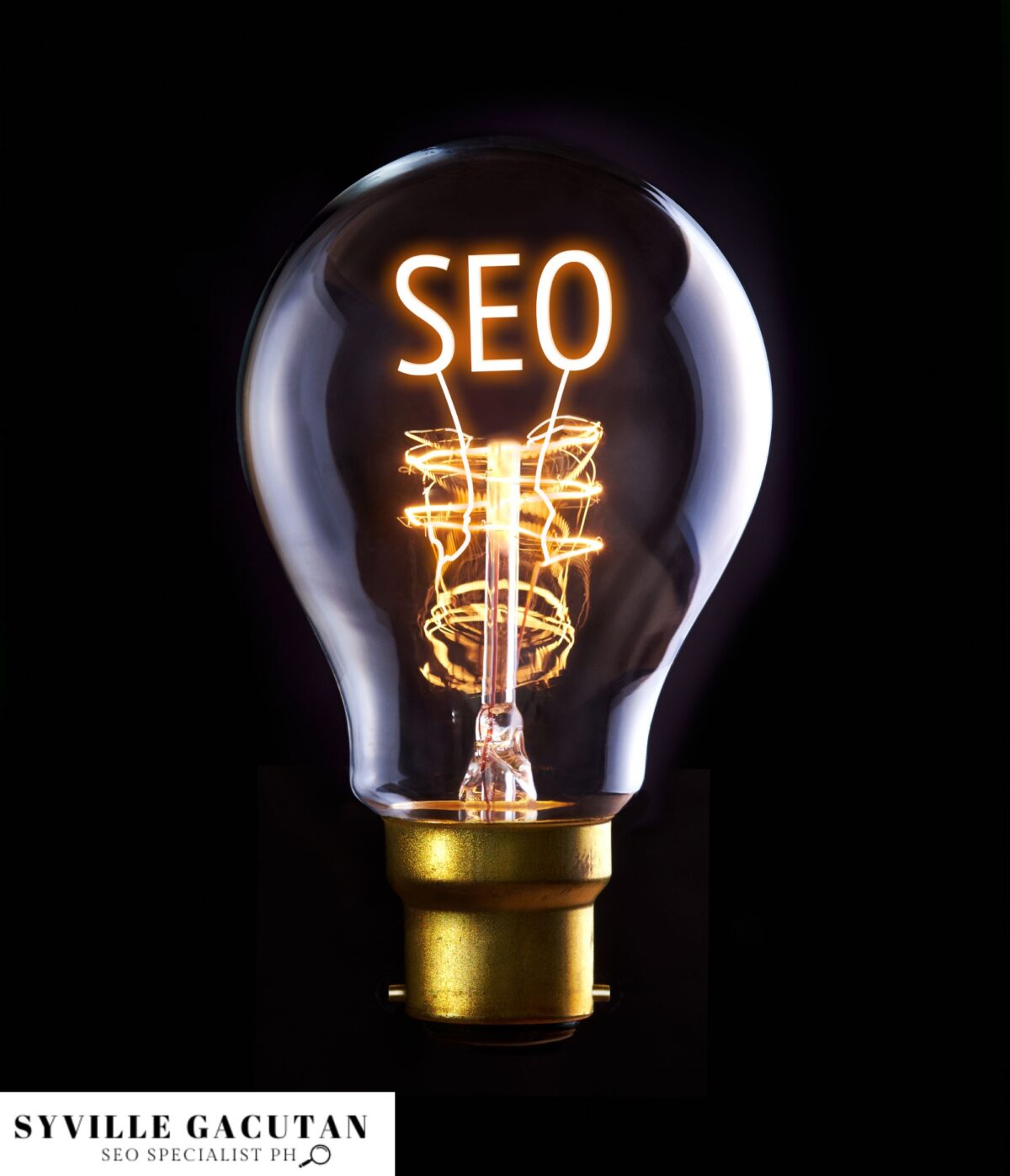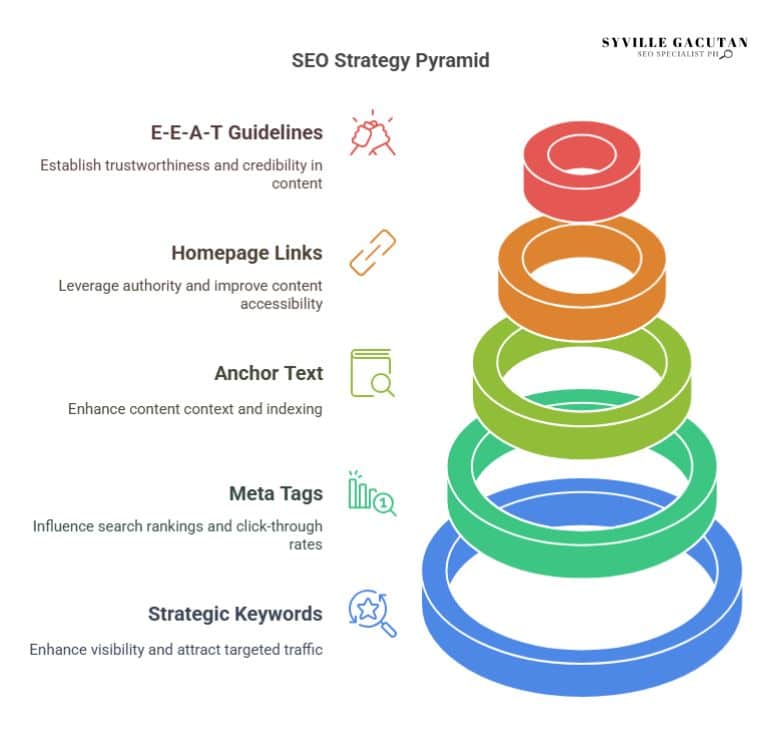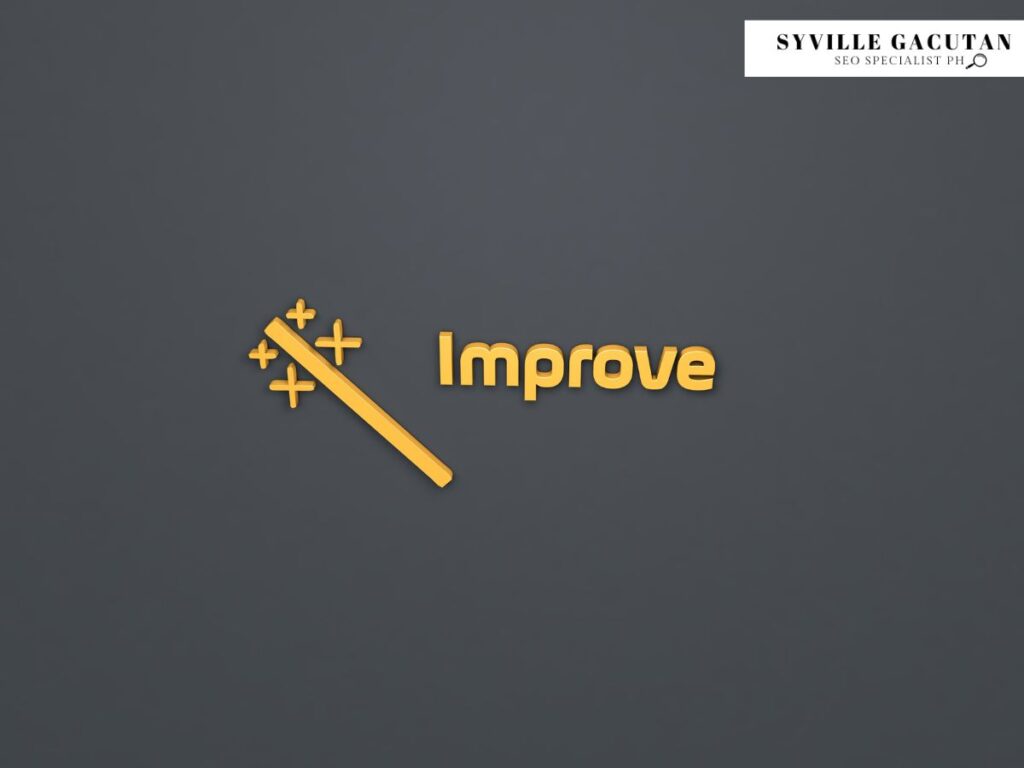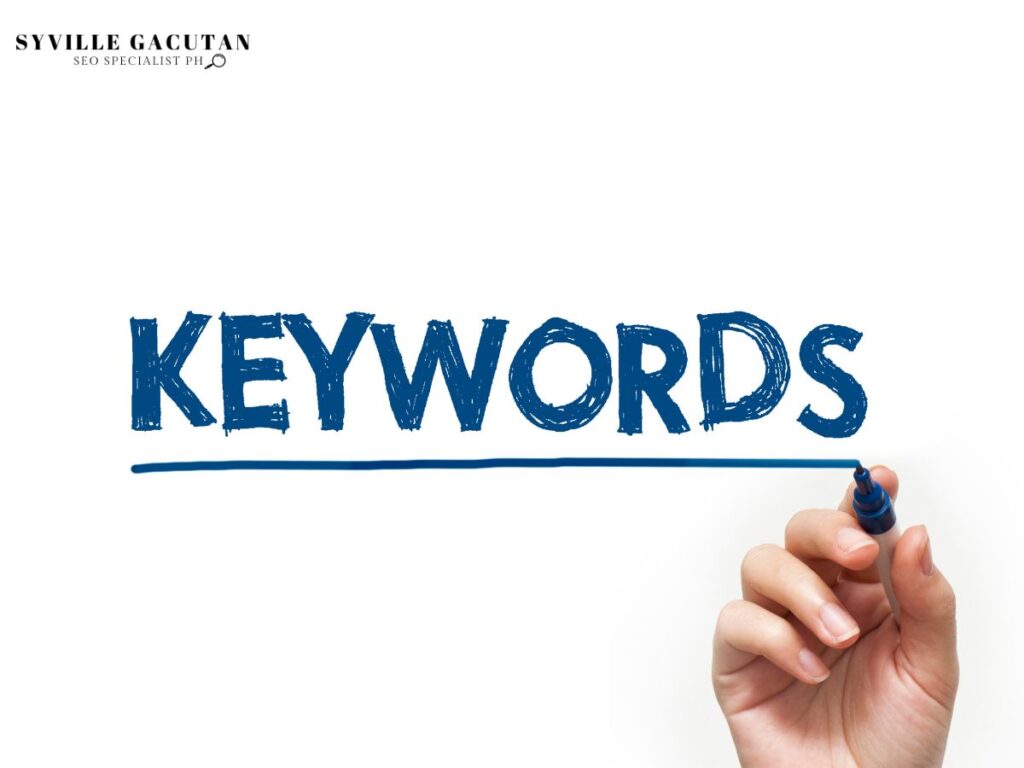
How to Elevate Your Content’s Visibility With SEO
When using SEO to enhance content visibility. start by optimizing anchor text for internal links to improve user navigation and search engine understanding. Craft concise, keyword-rich meta tags to capture both search engine attention and user interest. Elevate the importance of target pages by featuring them on your homepage. Adhering to Google’s E-E-A-T guidelines, focus on cultivating expertise and trustworthiness. Strategically use keywords in headlines to increase visibility. Finally, engage your audience with multimedia for deeper connection and longer dwell times. Delve deeper into these strategies to fully unlock your content’s potential and prominence online using SEO to enhance content visibility.
Key Takeaways
- Utilize strategic keywords in headlines to enhance visibility and attract targeted traffic effectively.
- Craft concise, informative meta tags to influence search rankings and improve click-through rates.
- Integrate diverse anchor text for internal links to enhance content context and indexing.
- Reference target pages on the homepage to leverage authority and improve content accessibility.
- Follow Google’s E-E-A-T guidelines to establish trustworthiness and credibility in your content.

Optimize the Anchor Text for Your Internal Links
Optimizing the anchor text for your internal links is a crucial aspect of enhancing your website’s SEO performance. Anchor text relevance ensures that search engines understand the context and significance of linked content, leading to improved indexing and ranking. By strategically employing contextual linking, you provide both search engines and users with a coherent narrative that enhances navigation and understanding of your site’s content.
To achieve optimal results, it is essential to consider keyword variations in your anchor texts. Using diverse keywords not only prevents redundancy but also captures a wider range of search queries, thereby broadening your content’s reach. It is important, however, to maintain relevance and avoid overstuffing with keywords, as this could negatively impact user experience and SEO.
When considering link placement strategies, prioritize links that naturally fit within the content. Links should be embedded in a way that aligns with the flow of the text, guiding users seamlessly from one piece of content to another. This approach not only enhances user engagement but also signals to search engines the importance and hierarchy of your web pages.
Furthermore, aligning your anchor text with user intent is paramount. Understanding what your audience is seeking allows you to craft anchor texts that directly address their needs and interests. This alignment fosters a more intuitive and satisfying user journey, leading to increased page views and improved SEO metrics.
Improve Meta Tags

Enhancing meta tags is a fundamental step in boosting the visibility of your content in search engine results. Meta tags, though often overlooked, hold substantial meta tag importance in the realm of SEO. They serve as the first impression of your content to both search engines and potential visitors.
Crafting descriptions that are concise yet informative is crucial in capturing user interest and conveying the essence of your content. These descriptions should effectively summarize the page’s content while integrating keyword relevance to align with search queries.
Title optimization is another critical aspect of improving meta tags. The title tag is one of the most significant on-page SEO elements, influencing both user click-through rates and search engine rankings. A well-optimized title should be compelling and include primary keywords, ensuring they naturally fit within the context.
However, it’s essential to maintain character limits, typically around 50-60 characters, to prevent truncation in search results.
Furthermore, the meta tag importance extends to how these elements communicate with search engines. When executed correctly, meta tags can enhance the indexing process and improve the likelihood of higher rankings.
It is imperative to consider keyword relevance, ensuring that chosen keywords reflect the user’s intent and are seamlessly integrated within titles and descriptions.
Reference the Target Page on the Homepage

Beyond the realm of meta tags lies another impactful strategy for boosting content visibility: referencing the target page on the homepage. This tactic leverages the homepage’s inherent authority and frequent visits to direct users to specific content, thereby enhancing its accessibility and relevance. Effective homepage placement is crucial; it ensures that users can easily locate the target page, thereby improving user experience.
By featuring a link or a call to action prominently on the homepage, you are not only guiding visitors but also signaling to search engines the page’s importance within your site’s content hierarchy.
Integrating the target page into the homepage’s navigation structure can further augment visibility. This involves strategically placing links within menus or dedicated sections that are consistent with the overall design and flow of the homepage. For instance, employing clear and concise language in the navigation bar or a featured section can draw attention and facilitate seamless access.
This strategy should be mindful of maintaining a balance between visibility and clutter, ensuring that the homepage remains navigable and user-friendly.
Additionally, consider the homepage’s role as a gateway to your site’s broader content ecosystem. By thoughtfully positioning the target page, you not only enhance its discoverability but also contribute to a coherent content hierarchy that reflects the site’s strategic objectives.
A well-structured homepage acts as a map, guiding users and search engines alike, thereby amplifying the visibility and reach of your key content. Ultimately, this approach marries technical SEO considerations with a focus on optimizing user engagement.
Follow Google’s E-E-A-T
In the realm of SEO, adhering to Google’s E-E-A-T guidelines—Expertise, Experience, Authoritativeness, and Trustworthiness—has become paramount for improving content visibility and ranking. These principles serve as the cornerstone for establishing expert authority and ensuring that your content resonates with both users and search engines.
The integration of E-E-A-T into your content strategy amplifies user experience by providing readers with credible, reliable information that meets their needs.
To embody expertise, content creators must demonstrate a deep understanding of their subject matter, ensuring that every piece reflects thorough research and insightful perspectives. This not only enhances content credibility but also encourages trust signals, pivotal for search engines when ranking pages.
Experience is equally crucial, as users gravitate towards content that reflects practical knowledge and real-world applications, adding layers of authenticity and genuine value.
Authoritativeness is achieved when content consistently aligns with niche relevance, establishing the brand or individual as a go-to source within a specific field. This can be accomplished through strategic collaborations, guest articles, and earning backlinks from reputable websites, all of which bolster the perceived authority of the content.
Trustworthiness is the final pillar, involving transparent communication and ethical practices. Displaying author bios, citations, and reviews are effective methods to build trust with your audience.
Include More Keywords in the Headline

Crafting an impactful headline is crucial for SEO success, as it serves as the gateway to capturing audience interest and improving search engine rankings. The strategic inclusion of keywords in headlines can significantly enhance visibility, making it imperative to understand the balance between keyword density and semantic relevance. A headline should neither be overly stuffed with keywords nor lack them entirely; striking the right balance ensures that search engines and readers both find it meaningful.
Incorporating long tail keywords into your headlines can be particularly effective. These keywords are often less competitive yet highly specific, which can attract targeted traffic. By conducting a competitive analysis, one can identify the most effective long tail keywords that competitors might be using successfully. This insight allows for the crafting of headlines that not only stand out but also align with popular search queries.
Keyword placement is another critical aspect. While the inclusion of keywords is vital, their position within the headline can also affect visibility. Ideally, placing the primary keyword towards the beginning of the headline can have a more substantial impact on SEO. This placement not only highlights the keyword’s importance to both search engines and readers but also capitalizes on user search behavior.
Lastly, maintaining a focus on semantic relevance ensures that the keywords used in headlines are contextually appropriate. This relevance enhances the likelihood of attracting the right audience while minimizing bounce rates, thereby improving overall content engagement.
Engage the Readers with Multimedia

Utilizing multimedia elements is a powerful strategy to enhance reader engagement and improve content visibility. By integrating various forms of media into your content, you not only capture the audience’s attention but also cater to diverse consumption preferences.
Visual storytelling, for instance, leverages imagery to convey messages more vividly than text alone, making the content both memorable and impactful. Similarly, the inclusion of interactive elements such as quizzes and polls encourages active participation, fostering a deeper connection with the audience.
To further boost engagement, consider incorporating user-generated content. This approach not only adds authenticity to your message but also builds a community around your brand, as users feel valued when their contributions are recognized and shared.
Video integration is another crucial component, offering dynamic and engaging experiences that can effectively communicate complex ideas in a short amount of time. Videos can also improve dwell time on your webpage, signaling to search engines that your content is valuable.
Infographic design plays a pivotal role in distilling complex data into digestible visuals, enhancing comprehension and retention. Infographics are often shared on social media platforms, extending the reach of your content and driving additional traffic to your site.
Here are some key benefits of using multimedia:
- Enhances visual storytelling, making complex information accessible.
- Encourages user interaction through interactive elements.
- Leverages user-generated content for authenticity and community building.
- Utilizes video integration to boost engagement and dwell time.
- Employs infographic design to simplify data and enhance shareability.
Final Thoughts
Elevating your content’s visibility with SEO requires a strategic approach that blends user engagement with search engine optimization. By optimizing anchor text for internal links, crafting compelling meta tags, and strategically referencing target pages, you enhance your site’s authority and accessibility. Adhering to Google’s E-E-A-T guidelines establishes trustworthiness, while incorporating keywords in headlines boosts discoverability. Engaging readers with multimedia enriches their experience, making your content more captivating and shareable.
Ready to boost your content’s visibility and drive results? Connect with Syville Gacutan, an SEO Specialist in the Philippines, who can help you implement these SEO strategies effectively. With Syville’s expertise, you can achieve higher rankings, increased engagement, and sustainable online growth. Reach out today to elevate your content’s impact.